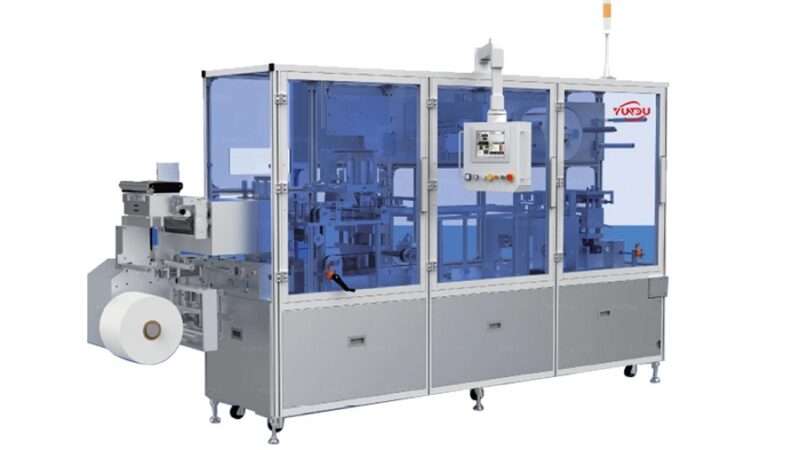Serverless architecture in business for cloud based app development
Serverless architecture is the current buzzword that has been making rounds in the cloud ecosystem for quite a long time now. Serverless architecture comes with a series of benefits when we compare it to traditional server-based infrastructure. Also gone are the days when app developers had to struggle with servers by making plans and budgets for renting or buying them and powering them in place.
Serverless architecture now comes with several benefits like higher flexibility, better scalability, a cost-effective mode of software development, and faster release time.
We call it “serverless” because it is based on the serverless computing model where the business takes the backend service from a serverless vendor where they are charged on the basis of computation. For utilizing serverless architecture, you need to first sign up for the cloud-based infrastructure and then install an API. Any individual or business can pay for utilizing the serverless architecture in a way that would make sense.
How does Serverless Architecture Work?
Developers are mainly depended on the serverless architecture for working on specific functionalities. Therefore, the model is mainly offered as Function-as-a-Service (FaaS). Here are the ways how serverless computing is written and executed:
- The developers write a function that mainly serves the specific requirement within the app code. The developers then start defining an event that pushes the cloud service provider to execute a particular function. In general, the HTTP request is commonly used as a type of event.
- The event then gets triggered. In case the event includes an HTTP request, then the user needs to trigger it with a click.
- Next, the function gets executed. The cloud provider will now check if the function is already operating. In case it is not operating, then it starts a new instance for functioning.
- The results are there being received by the users. The users finally get the result of their function in the app.
Market Demographics of Serverless Architecture
Talking about the market valuation, the Global Serverless Architecture Market size is projected to reach the valuation of $36.84 Billion by 2028 during the forecast period 2021- 2028. The growing awareness of the advantages of serverless architecture, such as lesser operational costs, and improved process agility, are the main factors for driving its market growth.
With the adoption of serverless architecture, organizations are now cutting off the traditional, expensive, and time-consuming processes like purchasing hardware components, installing, configuring, and then troubleshooting them. Serverless architecture has removed the burden of managing databases, and servers, facilitating supervision and configuration costs.
Advantages of Serverless Architecture in Business
There are a number of benefits when it comes to partnering with a cloud professional service provider to integrate serverless architecture into your business. Let’s dive into the benefits now:
- Higher Scalability
Serverless apps can handle a larger number of requests while making the process extremely seamless. Businesses that tend to prefer traffic always go for serverless architecture. Serverless applications can easily scale up and down as per the increase or decrease in the number of users. When a function needs to run on several instances, the servers automatically kickstart, run and finish whenever required using containers.
- Reduced Cost
For any kind of software development project, infrastructure, and human resources are the two main cost elements. Serverless architecture, through its pay-as-you-use model, brings the exact cost of the infrastructure. When your business switches to a pay-as-you-use model, you will cut
up almost 90% of maintenance costs and backend resources.
- Faster Updates and Deployment
With a serverless architecture, you will be free from uploading code to the servers for any backend configurations. Your developers can easily go for uploading the codes and launch the newest version of your application. Thus, the development team doesn’t need to confirm whether the update has been rolled out across multiple devices or not. This highlights the main benefit of instant updates and deployments with serverless infrastructure.
- Easier Management of Operations
The legacy systems traditionally have provided infrastructure for the expansion of company software development processes. However, the dependency on these legacy systems has often proved to be quite detrimental to business disruption efforts. With the adoption of serverless architecture, your business needs to think about innovation since all the infrastructure requirements will be handed by the providers.
- Enhanced Efficacy
The conventional or traditional servers constantly remain operational. However, by integrating the serverless architecture, you will be able to pay per request. With serverless architecture, there is no concern about scalability, setup, or capacity planning because the effectiveness of the system gets boosted.
- Reduce Latency
The fact that serverless applications cannot be hosted on any origin server makes it possible for the code to be operational from anywhere. Thus, depending on the provider, it becomes easier to run the application functions from servers that are actually closer to the end users. This process actually decreases the latency as your user’s request doesn’t go to the origin server, thus making the data transmission process faster.
Examples of Serverless Architecture
Here are some of the good genres of serverless infrastructure that are being utilized in several industries and businesses.
Web Application Architecture
When it comes to building web application architecture, the cloud providers help you develop the API and get connected with the cloud services. This is an easy sign-in process, after which the code starts running. Also, the best part is that creating a single-page application becomes simpler with the help of serverless cloud computing. The single-page applications can build an ideal case for going serverless because of their lightweight features and limited dependencies.
IoT Backend
If your IoT device servers are connected to tens of applications, then it can be quite challenging. Serverless architecture helps the developers on making rules that will help to kickstart database search for a few devices, offering activation codes when the device asks for access and registration.
Saas Software
Saas software development mainly helps when the service load fluctuates in terms of tasks and clients. Resolving the ever-growing market demand has been quite challenging for solution architects, and here’s where the serverless infrastructure comes in. The serverless architecture has made it easier with its automatic scaling feature that supports continuous innovation and deployment.
Mobile Application Backend
This is one of the best parts of the serverless architecture. The mobile application backend has the capacity to offer multiple environments. With its scalable infrastructure, the developers can easily create a native application backend. This makes the task easier for them whenever the users ask for the cloud vendor’s serverless function functions.
When Should you Use a Serverless Architecture?
Here are a few instances when you can use the serverless architecture:
- When you want to scale up automatically without getting involved in any kind of complexities. When you want to build effective solutions rather than getting involved in infrastructure maintenance.
- When you want to reduce the overall app development cost without affecting the quality of the application.
- When you want your applications to be designed for frequent changes and updates.
- When your application has an unpredictable server loading speed.
When you Should not Use a Serverless Architecture?
Here are a few instances when you should not use serverless architecture:
- If you require a quicker response from the server, then you should not use serverless computing because the functions, in this case, tend to go cold whenever it is left idle, thus making it necessary for manually starting the functions.
- Since the FaaS functionality has a limited lifetime, therefore real-time applications utilize WebSockets. In such an instance, you cannot utilize serverless computing.
The only solution to these issues lies in the adaptation of a hybrid approach where the FaaS functionality gets integrated with the BaaS.
Make your Business Model Serverless with your Cloud Professional Service Partner
With several predominant challenges, the serverless architecture is still considered to be the future of modern app development. Owing to its numerous benefits like scalability, flexibility, cost-effectiveness, and time effectiveness, serverless architecture is now widely popular within businesses.
Organizations that offer cloud professional services should launch better operational tools and offer those to the developers for easy maintenance and debugging. Get in touch with the cloud professional service provider and choose a serverless architecture for your app development process.






